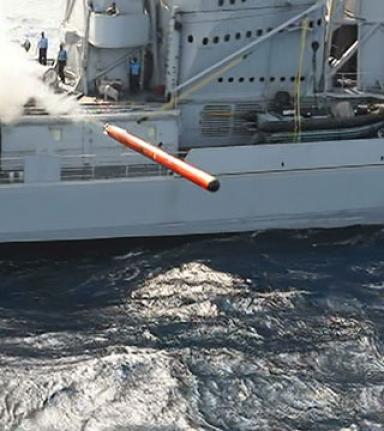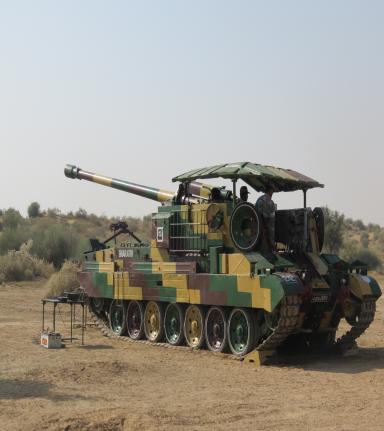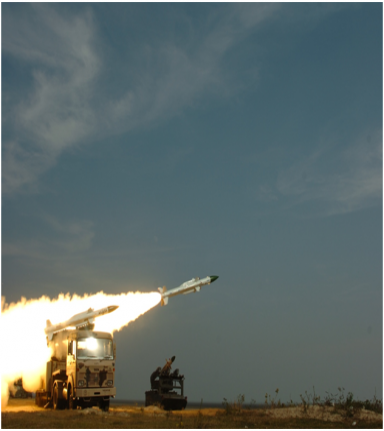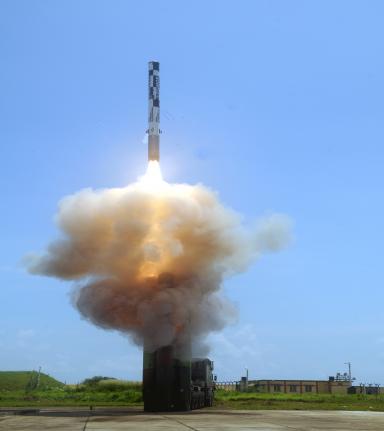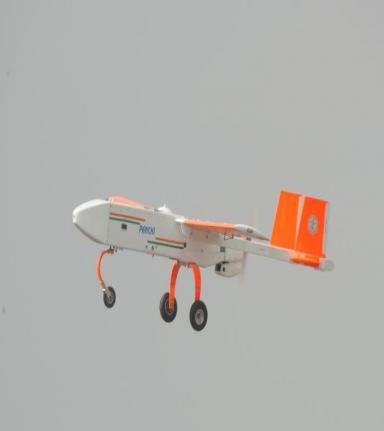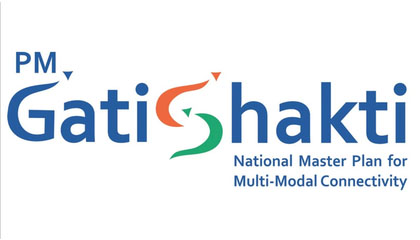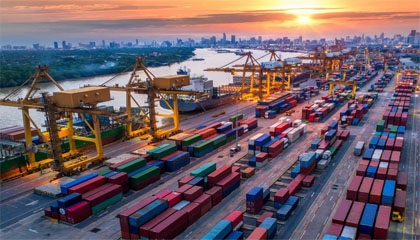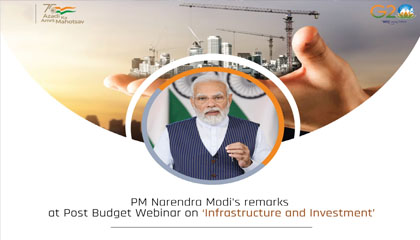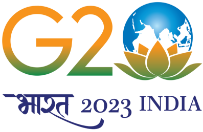DEVELOPING THE SPACE ECOSYSTEM IN INDIA: FOCUSING ON INCLUSIVE GROWTH
When he became the PM, people expected the same aggression in political orders to the Defence Forces. Soon, the Ministry of Defence became a key focus of PM Modi’s cabinet. Respective Defence Ministers put in meticulous efforts to make Defence set up the face of new India. Let’s have a look at big-ticket changes.
Development & national security go hand-in-hand – The twin objectives in focus in MoD’s push for Aatmanirbharta in Defence
New India powered by indigenous ecosystem; INS Vikrant, LCH ‘Prachand’ and other new acquisitions strengthen the might of the Armed Forces
Record rise of defence exports – Emergence of Indian companies on the global stage
‘AGNIPATH’ rolled out to build a youthful, tech-savvy & future-ready Armed Forces – Agniveers to begin training
The Gati Shakti Master Plan, introduced by PM Modi on 13 October 2021, stands as a significant undertaking that aims to enhance collaboration among various ministries, states, and departments.
Acknowledging the pivotal role of port infrastructure in driving economic growth, the Modi government has undertaken ambitious endeavours to enhance and modernise India's ports.
Under the PM Gati Shakti National Master Plan For Connectivity, the Indian Government has introduced a novel digital tool aimed at addressing the challenges of project delays
Over the past years, the government has successfully launched 15 Vande Bharat trains, with plans to manufacture an additional 400 Vande Bharat express trains in the next three years
In a significant move, the government demonstrated its boldness in the budget by raising the capital investment outlay to Rs 7.5 lakh crores.
DEVELOPING THE SPACE ECOSYSTEM IN INDIA: FOCUSING ON INCLUSIVE GROWTH
India’s space programme is one of the most cost-effective in the world. India has gained global recognition for successfully launching lunar probes, constructing satellites, transporting foreign satellites, and even reaching Mars. The global space economy is currently valued at approximately US$ 360 billion. India is the 4th nation to enter the elite space power club with an anti-satellite weapon. Despite being one of the world’s few spacefaring nations, India accounts for only around 2% of the global space industry. Last year in 2022, there were 180 orbital launches, which is more than double the 86 launches five years prior. All major economies are striving to explore and exploit space. This is not restricted to government-sponsored space programmes. Private space exploration has emerged as one of the fastest-growing sectors. Under the umbrella of a new organisation called IN-SPACe, India’s business sector, including start-ups and diversifying established firms, would be able to take part in the country’s space journey.

Indian Space Background
The Indian National Committee for Space Research ("INCOSPAR") was established under the Department of Atomic Energy in 1962, marking India's first entry into space research and exploration. INCOSPAR was superseded in 1969 by the Indian Space Research Organisation ("ISRO"), with the goal of using space technology to advance India's position in the worldwide competition of space exploration. Furthermore, the Department of Space and the Space Commission (DSSC) was legally established in 1972.
With the additional resources provided by the DSSC, ISRO developed the first Indian satellite, Aryabhata, and launched it with Soviet Union assistance in 1975 as the country's first achievement in space. This resulted in a better understanding of satellite technology and related research, including TV broadcasting through the Satellite Instructional Television Experiment (SITE) programme.
In 1980, Rohini became the first Indian satellite to be successfully launched into orbit by India using an indigenously built launch vehicle, SLV-3. Rakesh Sharma became the first Indian citizen to go into space as part of a three-member Soviet Indian crew in 1984. Since then, India has expanded its space programme to include communication, broadcasting, meteorology, defence, GEO satellites, astronomy, cartography, academic research, and even exploration of the Moon via two Chandrayaan missions and of Mars via the Mangalyaan Mars Orbiter Mission.
The number of launches undertaken by Indian Space Research Organisation (ISRO) during 2021-22 to 2023-24 (planned) is as follows:
|
S.No. |
Mission |
2021-22 |
2022-23 |
2023-24 |
|
1. |
Earth Observation Satellites |
2 |
3* |
2 |
|
2. |
Communication Satellites |
0 |
0 |
1 |
|
3. |
Navigation Satellites |
0 |
0 |
1 |
|
4. |
Space Science Satellites |
0 |
0 |
3 |
|
5. |
Technology Demonstrator |
0 |
0 |
0 |
|
6. |
PSLV |
1 |
2 |
4 |
|
7. |
GSLV |
1 |
0 |
2 |
|
8. |
LVM3 |
0 |
2* |
1 |
|
9. |
Small Satellite Launch Vehicle |
0 |
2* |
1 |
|
10. |
Gaganyaan |
0 |
0 |
0 |
|
|
TOTAL |
4 |
9 |
15 |
Space Centres in India

International Cooperation
The Indian space programme has always prioritised international collaboration. ISRO has signed over 25 agreements encompassing various space technology and services.
Internationally, ISRO is active in sharing its expertise and satellite data for natural disaster management through multi-agency organisations like as the International Charter for Space and Major Disasters, Sentinel Asia, and UNSPIDER. The UN Office for Outer Space Affairs (UN OOSA) has also established the Centre for Space Science and Technology Education for Asia and the Pacific (CSSTE-AP) in India.
As ISRO's capabilities improve, the scope of international cooperation broadens and diversifies. ISRO/DOS and India have signed space cooperation documents with space agencies from 61 countries (Afghanistan, Algeria, Argentina, Armenia, Australia, Bahrain, Bangladesh, Bhutan, Bolivia, Brazil, Brunei Darussalam, Bulgaria, Canada, Chile, China, Colombia, Egypt, Finland, France, Germany, Hungary, Indonesia, Israel, Italy, Japan, Kazakhstan, Kuwait, Luxembourg, Maldives, Mauritius, Mexico, Mongolia, Morocco, Myanmar, Nepal, Nigeria, Norway, Peru, Portugal, Republic of Korea, Russia, Sao-Tome & Principe, Saudi Arabia, Singapore, South Africa, Spain, Sri Lanka, Sultanate of Oman, Sweden, Syria, Tajikistan, Thailand, The Netherlands, Tunisia, Ukraine, United Arab Emirates, United Kingdom, United States of America, Uzbekistan, Venezuela and Viet Nam) and 5 multinational bodies (European Centre for Medium-Range Weather Forecasts – ECMWF; European Commission – EC, European Organisation for the Exploitation of Meteorological Satellites - EUMETSAT, European Space Agency – ESA; and South Asian Association for Regional Cooperation – SAARC).


